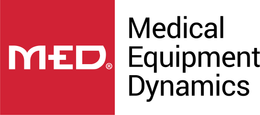The recent workforce reductions at the Food and Drug Administration (FDA) have stirred concerns across the medical technology sector. While many are focused on how these layoffs might delay approvals for new devices, an equally important conversation revolves around the opportunities this presents for the used and refurbished medical equipment market. As healthcare providers grapple with uncertainty and high costs, refurbished medical devices could emerge as a timely solution, offering both financial and operational benefits.
A Shifting Landscape in Medical Device Approvals
The FDA plays a critical role in ensuring patient access to safe and effective medical devices. However, workforce reductions—particularly in the Office of Device Evaluation—may lead to bottlenecks in the approval process for cutting-edge technologies. Historically, delays in device approvals have sparked innovation and adaptation within the industry, and it is reasonable to expect similar dynamics this time around.
With fewer resources allocated toward evaluating new devices, healthcare providers are likely to shift their focus toward proven technologies that are readily available. This is where the refurbished medical equipment industry steps in, offering high-quality devices that meet clinical needs without requiring regulatory re-evaluation.
The Rising Appeal of Refurbished Equipment
Refurbished medical equipment offers distinct advantages for buyers, particularly in times of regulatory uncertainty. These benefits include:
- Cost Savings: Refurbished devices are significantly less expensive than new ones, allowing healthcare facilities to stretch their budgets without compromising quality.
- Immediate Availability: Unlike new devices that require lengthy approval processes, refurbished equipment can be sourced and deployed quickly.
- Proven Reliability: Refurbished devices often come with warranties and rigorous testing protocols, ensuring they perform effectively in clinical settings.
For healthcare providers operating in rural and underserved areas, the affordability and accessibility of refurbished equipment can be game-changing. These facilities often face tight budgets and limited access to state-of-the-art technology, making refurbished devices a practical and impactful solution.
How FDA Layoffs Drive Demand for Refurbished Equipment
The FDA layoffs could have indirect yet significant effects on the refurbished medical equipment market. As approval delays for new devices become more prevalent, healthcare providers may turn to the second-hand market to maintain operational efficiency and patient care standards. Here’s how:
- Filling the Gap: With fewer new devices entering the market, refurbished equipment provides an immediate alternative for clinics and hospitals needing reliable tools.
- Mitigating Financial Risk: For buyers unsure of when new technologies will become available, refurbished devices offer a dependable and cost-effective solution.
- Encouraging Market Growth: Increased demand for refurbished equipment may drive innovation among suppliers, leading to better quality and support services.
The Role of Suppliers and Industry Stakeholders
Suppliers of refurbished medical equipment are uniquely positioned to capitalize on this moment. By emphasizing quality assurance, warranty programs, and competitive pricing, they can appeal to healthcare providers seeking immediate solutions. Collaboration with healthcare facilities to understand their needs and tailor offerings accordingly can further strengthen relationships and drive growth.
Industry stakeholders, including trade associations and policymakers, also play a crucial role. Initiatives to standardize the refurbishment process and ensure regulatory compliance can enhance buyer confidence and bolster the industry’s reputation. These efforts could include certifications for refurbished devices and training programs for technicians.
Why Buyers Should Act Now
For healthcare providers considering refurbished medical devices, there’s no better time to make the leap. The combination of regulatory uncertainty, cost pressures, and growing supplier innovation makes refurbished equipment a compelling option. Here are some reasons why buyers should act sooner rather than later:
- Maximized Value: Purchasing refurbished devices now allows providers to optimize their budgets while accessing dependable technology.
- Operational Continuity: With approval delays looming, refurbished equipment ensures facilities can maintain high-quality care without interruptions.
- Environmental Impact: Investing in refurbished devices promotes sustainability by reducing waste and extending the lifecycle of medical equipment.
Looking Ahead
The FDA layoffs are reshaping the medical technology landscape, offering both challenges and opportunities. For the used and refurbished medical equipment industry, this is a chance to demonstrate its value as a reliable and cost-effective alternative to new devices. Buyers, suppliers, and industry stakeholders all stand to benefit by embracing refurbished equipment as part of the solution to current and future challenges.
While the road ahead is uncertain, one thing is clear: the refurbished medical equipment market is uniquely positioned to thrive in times of regulatory flux. By focusing on quality, affordability, and accessibility, it can play a vital role in ensuring healthcare providers have the tools they need to deliver excellent patient care.

